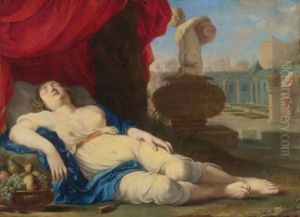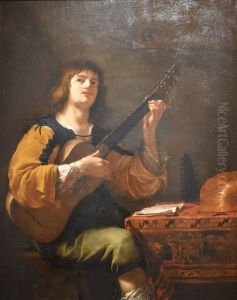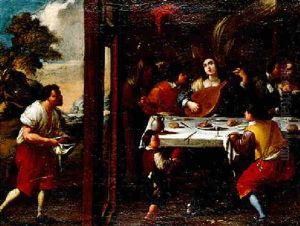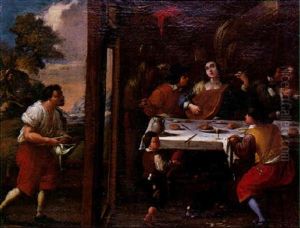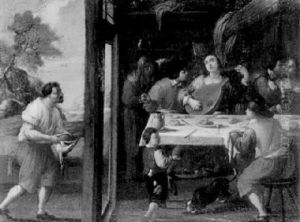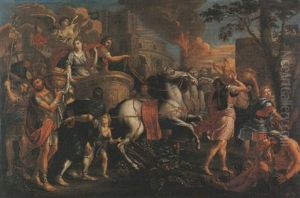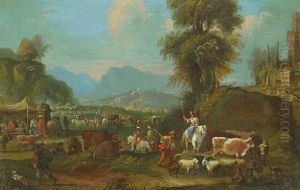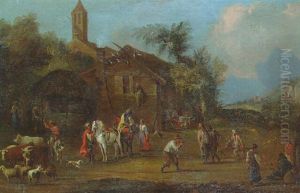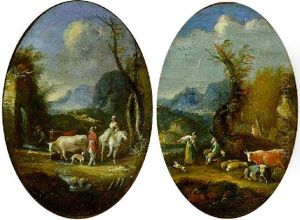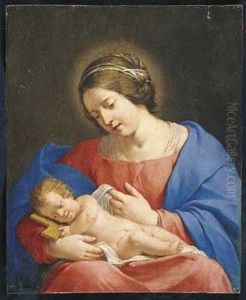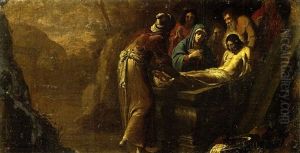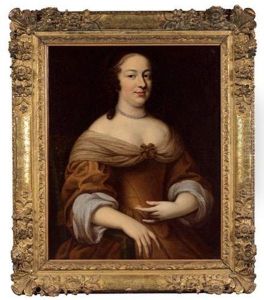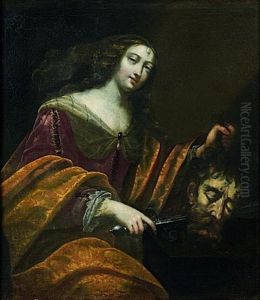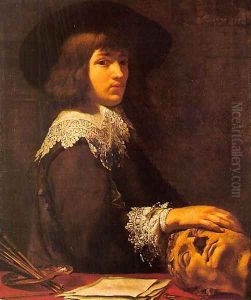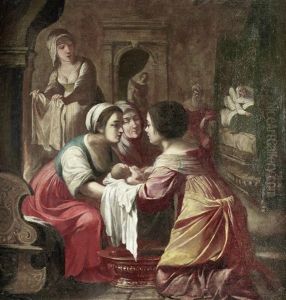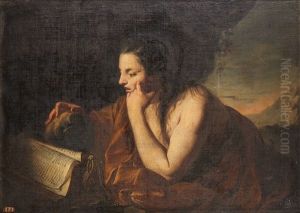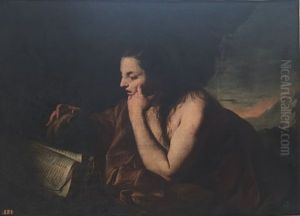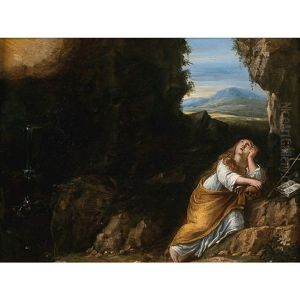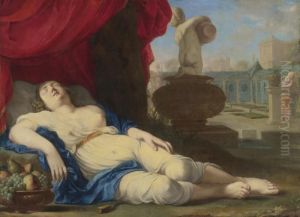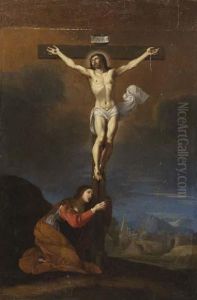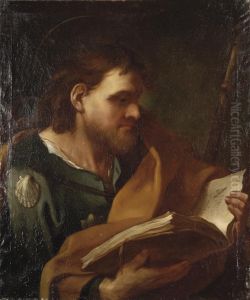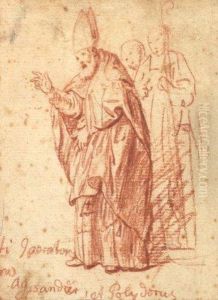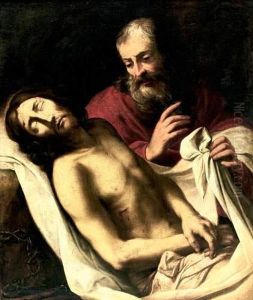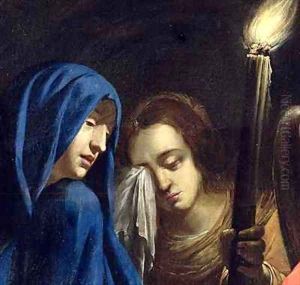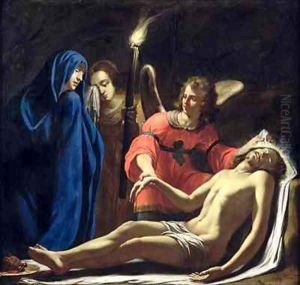Jean Daret Paintings
Jean Daret was a French painter and engraver who was born in Brussels in 1613 and died in Aix-en-Provence in 1668. His career is notable for its contributions to the Baroque period of art, which was characterized by dramatic expression, rich coloration, and bold manipulation of light and shadow.
Daret received his artistic training in the workshop of the Flemish painter Nicolas Régnier in Rome, which allowed him to develop a style that combined the Flemish tradition with the Italian Baroque's dynamism. After completing his apprenticeship, Daret moved to Aix-en-Provence in the south of France, where he quickly became a prominent figure within the local art community.
In Aix, Daret was instrumental in the development of the regional artistic style. He painted religious subjects, portraits, and historical scenes. His work was known for its realistic portrayal of figures and its vivid depiction of textures and fabrics. Daret's paintings often reflected the influence of the Roman Baroque, yet they maintained a distinct clarity and orderliness, more in line with the French taste of the time.
One of his most significant contributions was the decoration of the Hôtel de Ville (Town Hall) in Aix-en-Provence. Daret's frescoes in the town hall are considered some of his finest works and demonstrate his ability to handle large-scale compositions.
Throughout his career, Jean Daret also worked as an engraver, producing a number of prints that further disseminated his style and influence. His engravings covered similar themes to his paintings and were well regarded for their technical skill and artistic quality.
Despite his success, little is known about Daret's personal life, and many of his works have been lost or remain unidentified. Nonetheless, his surviving works continue to be studied and admired for their contribution to the Baroque movement in southern France. Jean Daret's legacy is preserved in the museums and collections that hold his works, as well as in the city of Aix-en-Provence, where his artistic impact is still felt today.
